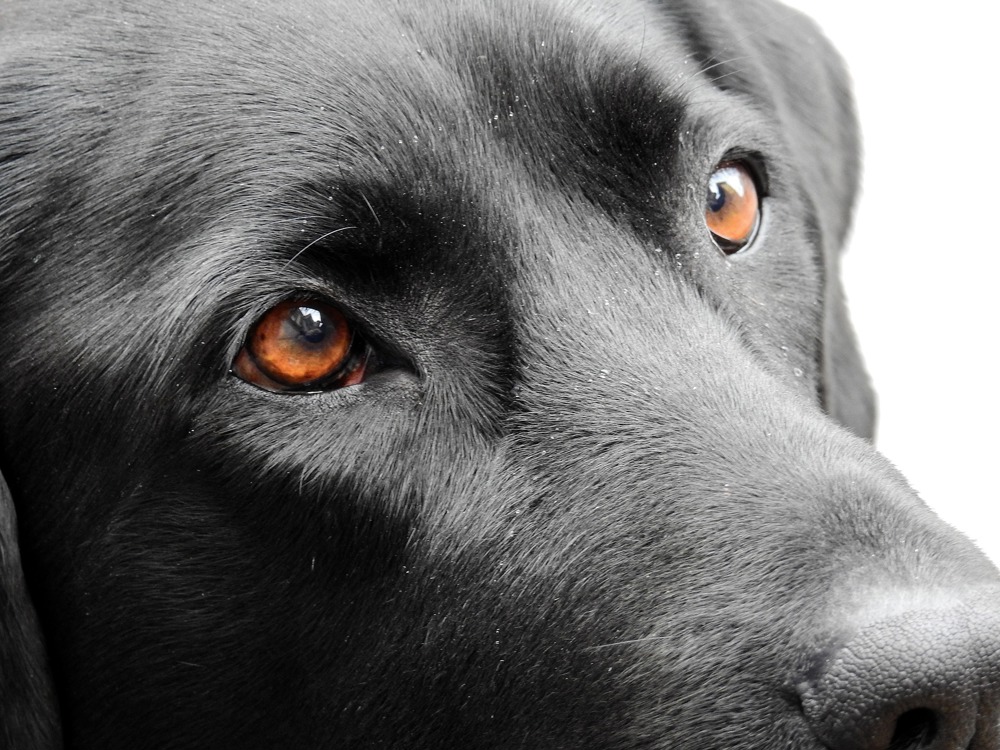
What is MRD?
Multifocal retinal dysplasia (MRD) is a type of inherited eye condition. Affected dogs can be diagnosed with MRD after an eye examination that finds specific changes to the light sensitive area at the back of the eye (the retina).
Find out more about MRD
Multifocal retinal dysplasia (MRD) is a consequence of disorganised development of the retina and one or both eyes may be affected. It is typified histologically by retinal folds and rosettes which, on ophthalmoscopic examination, appear as focal or multifocal linear streaks (retinal folds) and oval to round lesions (rosettes). A more extensive form of MRD, termed geographic retinal dysplasia, typically presents as a large circumscribed, roughly circular, lesion with abnormal blood vessels and retinal detachment in the area involved.
What are the clinical signs of MRD?
Many dogs with MRD have no obvious clinical signs and their vision appears to be unaffected.
On occasions, extensive retinal dysplasia, especially the geographic type, may be associated with visual defects and, rarely, blindness.
Upon examination of affected dogs, retinal folds may become less obvious over time, or even disappear, whereas geographic lesions can become more obvious.
How is MRD inherited?
MRD is usually transmitted as an autosomal-recessive condition; this means that a dog must inherit two copies of an abnormal gene (one from its mother and one from its father) before it is affected. No gene mutation has been found that can cause MRD. Some scientists have suggested that more than one gene mutation may be responsible and that MRD is inherited in a more complex way than was originally thought.
How are dogs screened for MRD?
Breeders can use the BVA/KC/ISDS eye scheme to screen their dogs for inherited eye diseases, such as MRD, before they are bred from.
The BVA/KC/ISDS eye scheme also offers litter screening, and MRD can be detected as part of a routine litter screen of a puppy’s eyes.
Where can I find results for MRD?
Before 2020, results for MRD results were recorded on an open register. This only listed dogs that were found to be affected.
Results from this open registry can be found below:- American Cocker Spaniel
- Cavalier King Charles Spaniel
- English Springer Spaniels
- Golden Retriever
- Hungarian Puli
- Labrador Retrievers
- Rottweiler
The decision to move results from the MRD open register to the health test results finder was made following consultation with the BVA/KC/ISDS eye scheme working party. This was largely to bring it into line with other eye test results, acknowledging that there was greater understanding of the condition and that there are now far greater opportunities to inform breeders and owners about the condition and its relevance.
Additionally, recording these results as part of a database, as opposed to on a separate spreadsheet enable us to continuously monitor eye health, as part of ongoing research, and provides improved opportunities to determine whether dogs affected with MRD go on to develop other ocular conditions.
How are results recorded?
For MRD, dogs that have been screened using the BVA/KC/ISDS eye scheme will have the following possible results recorded on The Kennel Club's health test results finder:
- Unaffected – these dogs have no clinical signs of MRD, or any other eye disease
- Affected MRD – These dogs have been found to have clinical signs of MRD
Breeding advice for MRD
If you are thinking of breeding from a dog that has been diagnosed as affected for MRD then we would advise you to consider all factors that may affect the health of future puppies. You may wish to take into account that this condition is not considered, in most instances, to impact the welfare of an affected individual.
Other equally important factors to consider when deciding whether two dogs should be mated together include; temperament, genetic diversity, conformation, other available health test results and general health. Clearly those conditions which are painful, or may cause the dog to go blind, or require surgical correction or long term medical therapy, should be regarded as important to eliminate from a breed. Your breeding decisions should always be well balanced and take into consideration the qualities and compatibility of both the sire and dam that you are considering.
